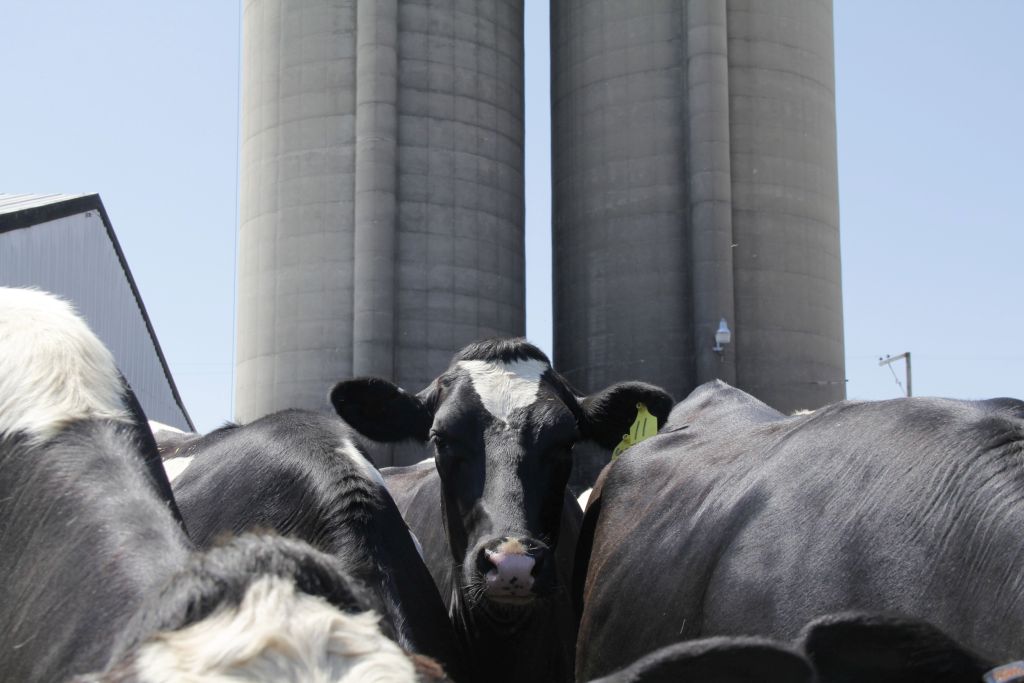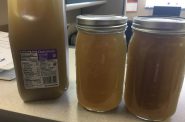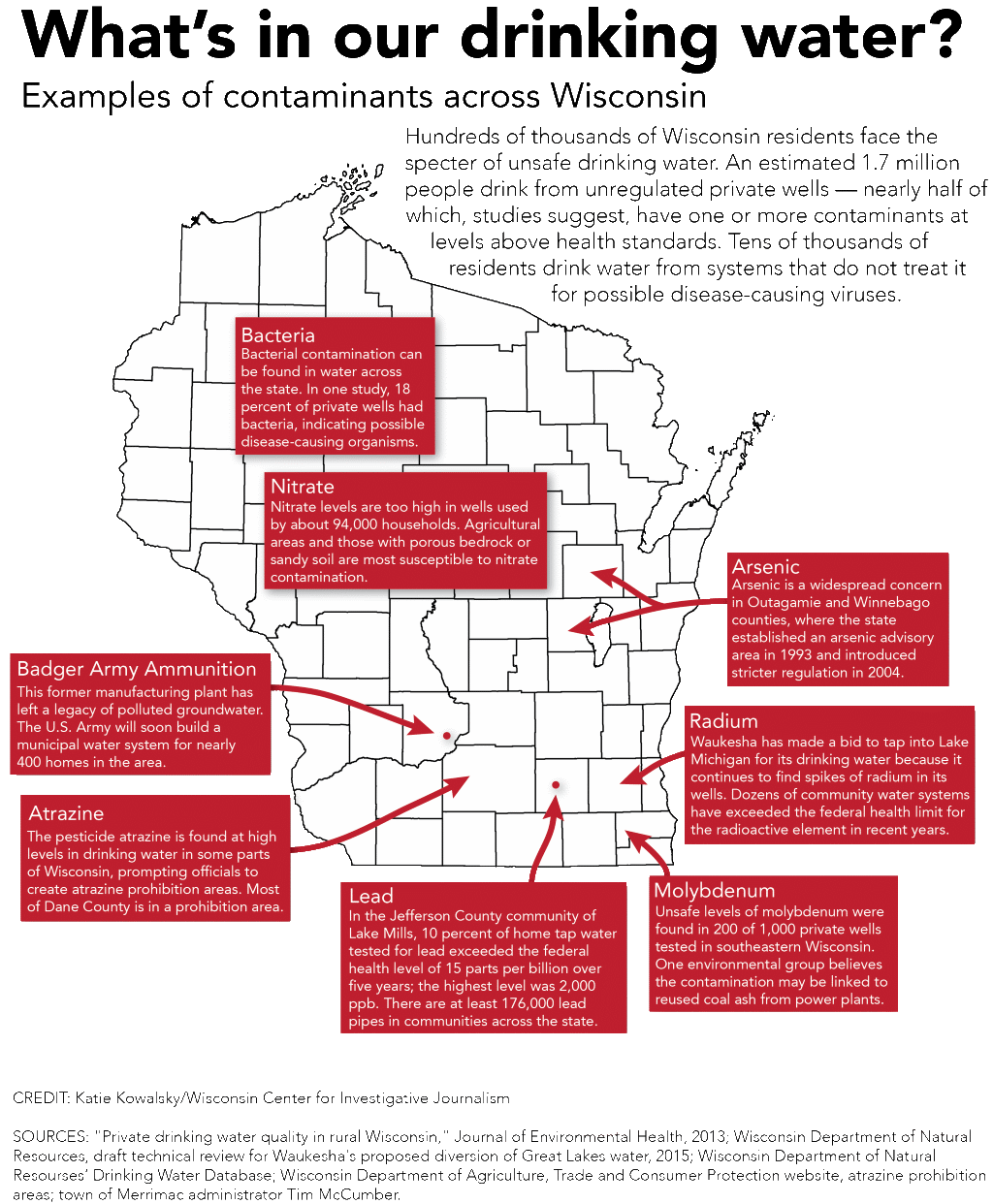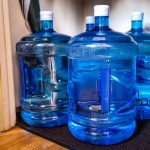Nitrate Pollutes State’s Drinking Water
Chemical is at unsafe levels in estimated 94,000 Wisconsin households.
Rules no match for nitrate
At least 90 percent of nitrate inputs into groundwater come from artificial fertilizers and manure from farming operations, according to the 2015 report of the Groundwater Coordinating Council. Nitrate in drinking water systems is increasing, the council found, and “current management activities to limit nitrate pollution have questionable effectiveness.”
In addition to blue baby syndrome, researchers are studying other possible health effects from nitrate in drinking water, including several cancers, thyroid problems, birth defects and diabetes. Nitrate can convert to compounds that are “some of the strongest known carcinogens,” according to the state groundwater council.
Nutrient management plans are the state’s main tool for addressing the problem. They help farmers apply nitrogen and phosphorus at the right rate to keep nutrients out of surface and groundwater.
“(But) nutrient management plans clearly don’t protect groundwater if we mean anything close to maintaining the drinking water standard,” said George Kraft, a professor of water resources at UW-Stevens Point who is the governor’s representative to the council.
Last year, the groundwater council made protecting groundwater from nitrate and other agricultural contaminants one of three top-priority recommendations for the state.
The state DNR, which is responsible for protecting groundwater, declined to provide anyone for an interview with the Wisconsin Center for Investigative Journalism about nitrate in Wisconsin’s drinking water. Former agency spokesman Bill Cosh also refused to answer questions about what strategy DNR was pursuing to reduce nitrate, directing a reporter instead to previously published reports.
But DNR drinking water chief Jill Jonas acknowledged at a 2014 scientific conference on nitrogen’s environmental impacts held in Madison that Wisconsin has “a worsening problem that we need to tackle.”
In October, 16 Wisconsin residents, including the Joneses of rural Spring Green, filed a petition with the U.S. Environmental Protection Agency seeking to force the DNR to correct deficiencies in its enforcement of the federal Clean Water Act.
The petitioners allege DNR has failed to adequately protect ground and surface waters that provide drinking water to the state. The agency has responded by saying it takes its responsibilities under the law seriously.
As bad as it is now, Wisconsin’s groundwater nitrate contamination overall is likely to increase long before it stabilizes, Kraft and other groundwater experts said, due to the lag time between when nitrogen is applied to the surface and when it reaches the water.
A team of researchers led by the EPA estimated in 2008 that agricultural nitrate may cost the nation $157 billion per year. Nitrate’s direct damage to drinking water supplies was estimated at $19 billion, with some of the greatest costs borne by Upper Midwest states including Wisconsin, Minnesota, Iowa, Illinois, Ohio, Michigan and Indiana. Much of the cost was attributed to a projected increase in colon cancer among those drinking contaminated water.
Jonas told the scientific conference last year that the costs of testing and treatment to remove nitrate pollution are growing statewide, “and it certainly is unsustainable.”
Dairy’s role scrutinized
In a handful of recent court cases, nitrate pollution has come front and center as rural residents have challenged large livestock operations. A Wisconsin judge in 2014 cited Kewaunee County’s widespread pollution of drinking water by nitrate and bacteria as evidence of “massive regulatory failure” by both federal and state agencies — a view that the DNR refutes.
Some residents there have pointed to the large dairy farms, known as concentrated animal feeding operations, as the most likely culprits for their polluted water. They have filed a separate petition asking the EPA to provide them with emergency safe drinking water and to investigate the sources of the nitrate pollution. Many also want tighter regulation of the dairies to protect the area’s vulnerable karst topography, where aquifers lie underneath shallow bedrock filled with cracks and holes.
In a case that all sides agree could set a national model, a federal judge in Washington state in May sided with environmental groups in ruling that several large Yakima dairies’ manure had polluted drinking water supplies with nitrate and posed an imminent threat to human health. The dairies were ordered to provide clean drinking water to hundreds of neighbors with contaminated wells.

Manure from dairy operations is blamed in part for nitrate that pollutes the drinking water in some parts of Wisconsin. Photo by Kate Golden of the Wisconsin Center for Investigative Journalism.
Giant dairy farms have mushroomed as Wisconsin’s industry has consolidated. The Wisconsin Dairy Business Association, an industry group, has fought the notion that the large farms have tainted drinking water by citing the looser regulation of small farms and the presence of human, as well as animal, waste in wells.
The group acknowledges agriculture’s role in the overall problem — and potential solutions.
“If anything, these dairies will be a big part of any improvements going forward,” said the association’s representative John Holevoet, adding that such farms “have embraced regular soil testing and detailed nutrient management planning in a way that others have not,” and pointing to research and technologies to improve the efficiency of nitrogen use.
“The reality is, manure management has never been better or more sophisticated than it currently is. It will only get better,” Holevoet said.
However, even farmers who are following best farming practices set out by federal or state agencies may pollute the groundwater, particularly in areas with geologically vulnerable aquifers such as northeastern Wisconsin’s karst areas or the Central Sands region.
Kevin Masarik, a groundwater education specialist at UW-Stevens Point’s Center for Watershed Science and Education, said some of the factors are beyond farmers’ control.
“We don’t have a lot of tools in the toolbox to address nitrate in groundwater,” he said.
Tainted Water
-
Fecal Microbes In 60% of Sampled Wells
 Jun 12th, 2017 by Coburn Dukehart
Jun 12th, 2017 by Coburn Dukehart
-
State’s Failures On Lead Pipes
 Jan 15th, 2017 by Cara Lombardo and Dee J. Hall
Jan 15th, 2017 by Cara Lombardo and Dee J. Hall
-
Lax Rules Expose Kids To Lead-Tainted Water
 Dec 19th, 2016 by Cara Lombardo and Dee J. Hall
Dec 19th, 2016 by Cara Lombardo and Dee J. Hall




















